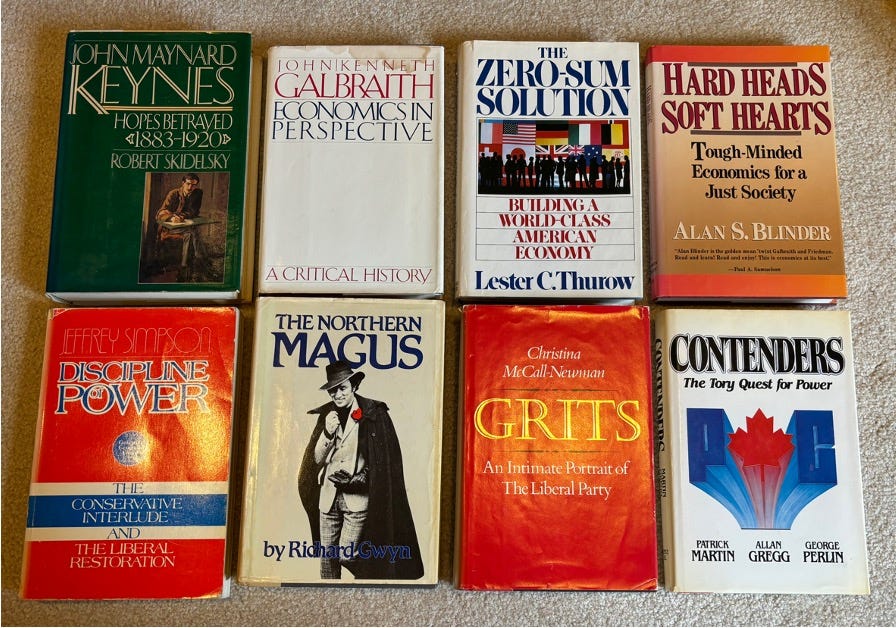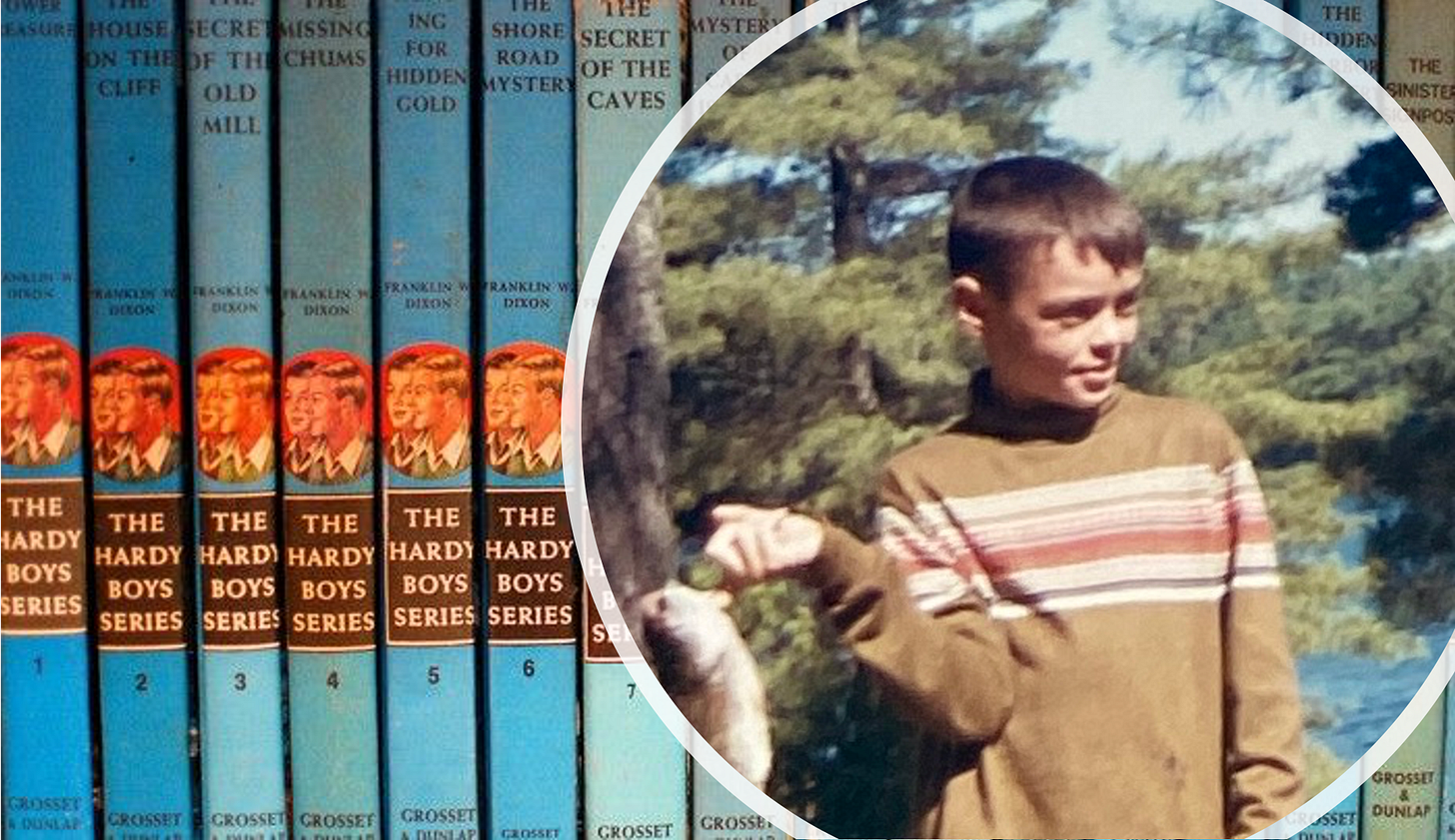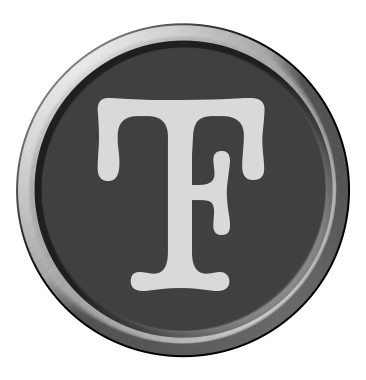In those moments when we read great books, we’re often escaping to a different world, exploring a foreign century, experiencing different emotions, learning about famous or sometimes infamous people and events… and the list goes on. But some of those books we’ve enjoyed recently will, in the future, loom larger and take on greater meaning in our lives. In hindsight, there’s more going on when we read a book that we love.
Those memorable books we’ve read locate us in a certain time, in a certain place, and in a certain mind-set. They become touchstones not just because we recall how deeply particular books affected us, but also because we remember where, and more importantly, who, we were at those times in our lives.
Not to descend into the melodramatic, but for many avid readers, books become signposts marking our time and our journey. In a way, they become a literary photo album of our lives.
For better or worse, here’s a look at some of the books that reflect different stages in this reader’s life. My point here is not so much about the books themselves, but about how they’ve inextricably tied themselves to our memories and feelings from the times in our lives when we read them.
Late 1960s
As I’ve noted in earlier posts, I wasn’t what you would call a bookworm in my youth. I think I was about 10 when I read my first Hardy Boys book and I was hooked. My twin brother and I read our way through as many of them as we could get our hands on. But more to the point of this post, reading The Hardy Boys marks in my memory a carefree time in my then young life. I worried about nothing and was easily excited about what we were having for lunch. In short, just thinking about the exploits of Frank and Joe Hardy immediately recalls a near idyllic childhood. (Yes, I know. I was and still am very fortunate.)
1970s
Skip ahead a bit into my adolescent and early teen years and I’d become fascinated by things that flew and how they worked. My reading at the time skewed heavily towards history and non-fiction and covered early flight, gliders, hovercrafts, and the space program. (Okay, I liked auto racing too, and also read about cars and go-carts.) At the time, those books seemed to do more than inform me. In fact, they often inspired me or perhaps emboldened me to emulate the early aviation pioneers—though without their success—and with a classmate actually build a few flying machines for ourselves.

After not quite making it into the air with our hang gliders, my co-conspirator and I decided to try to fly a little closer to the ground. We read everything we could get our hands on about hovercrafts, including the big book below, which still sits on the shelves in our library nearly 50 years later. Then we designed and built the GTH1. It actually worked quite well. (For those who suffer with insomnia, here’s one of my monthly columns for Leaside Life magazine from back in 2018 about my hovercraft experience.)

When I think of all the books I read about flight, space, and hovercrafts—most of which I still have—it instantly takes me back to a very exciting time in my life when we were not limiting ourselves to the printed page, but were actually building things and testing them. Those books and experiences were my gateway to a degree in Mechanical Engineering from McMaster University.
Early 1980s
My reading in the early 1980s—when my engineering course load permitted it—tended to be about politics and even philosophy. I was influenced by the young woman I was dating at the time, the smartest woman I’d ever met. Among the many books she enjoyed and recommended to me were two in particular that stayed with me and immediately transport me back to those formative years when I was discovering who I was and what—and who—was important to me.

The Pirsig classic, Zen and the Art of Motorcycle Maintenance triggered a kind of philosophical awakening that opened my mind in many different ways. And A Moveable Feast, well, if you’re a regular reader here, you’ll know of my now 40-year fascination with Paris of the 1920s and the Lost Generation of artists who transformed the cultural landscape a century ago. That all started when I first opened Hemingway’s A Moveable Feast.
Still in the early 1980s, I spent a summer backpacking around Europe with a good friend and a guitar. (I wrote a post about it here.) The experience of visiting so many different countries, including Morocco and East Germany, lifted my eyes and mind beyond Canada’s borders. The reading I did on that trip kindled an interest in geopolitics that remains with me today. I well remember reading Time magazine each week during that European odyssey. I also loved Frederick Forsyth’s cold war thriller, The Devil’s Alternative. In fact I was reading that novel when the 1982 G7 Summit gathered at Versailles, not that far from where I was lodging in a youth hostel in the south of France. I read several thrillers on that trip.
So, to this day, I associate Time magazine and thriller novels with that very special trip across Europe and the abiding interest in international affairs it sparked.
Mid 1980s
In the mid 1980s when I was working in federal politics on Parliament Hill and then Ontario politics at Queen’s Park, my reading was very focused on economics, political science, history, and biography. I particularly loved the three volume biography of John Maynard Keynes (Volume 1 is in the top left in the image below). I was on a steady diet of this fare while immersed in the world of politics working for Liberal Cabinet ministers in Ottawa and then Toronto.

Just pulling these books off my shelves to take this shot puts me squarely back in those exciting days when I was still in my twenties. I learned so much from reading these and countless other books in the mid-1980s. They helped me figure out exactly where I felt most comfortable on the ideological spectrum, and I haven’t strayed since. I should also note that I rediscovered Sherlock Holmes in this period and still love Conan Doyle’s sentences.
Late 1980s-early 1990s
In the late 1980s and early 1990s, I finally made a belated return to reading fiction after finally recognizing there was a gaping hole in my cultural understanding. I began reading all kinds of literary fiction but when I found authors I liked, I read my way through their backlists. In particular, in the space of a couple of years, I read all of Robertson Davies’ novels, all of Mordecai Richler’s, all of Paul Quarrington’s, and all of John Irving’s. I just loved all of their books and storytelling. And critically, these writers, and others, introduced me to the world of comic novels. Up until then, I’m embarrassed to report that I didn’t know that novels could make me laugh. I went on to read Stephen Fry, Christopher Buckley, Nora Ephron, Richard Russo, Michael Chabon, John Mortimer, and many more.

I really consider my “return to fiction” period in the late 1980s and early 1990s to be the first step on my long road to writing my first novel more than 15 years later. I can say with near certainty that had I not started reading fiction in earnest in my late twenties, I would not have become a writer.
So the novels I read in this period take me back to a time when much was going on in my life. Nancy and I were married. We bought our first home—a condo in Toronto’s St. Lawrence Market area. Our first son was born. And I’d just started what would turn out to be at 34 year career in public affairs/communications consulting. But I still hadn’t yet thought much about writing a novel one day. So these books are freighted with the feelings I had at the time: happiness, excitement, stress, uncertainty, and fatigue (remember the son who arrived in 1992!).
Mid 1990s to now
To be honest, not much has changed in my reading regimen since the late 1980s when I rediscovered fiction. But there were certainly developments on other fronts. Our second son was born in 1995, shortly after a partner and I started our own communications agency, Thornley Fallis. As you can imagine, starting a new business and adding another son to the mix while my wife and I both had demanding careers made for a very hectic and stressful time. But reading provided a welcome distraction and sometimes a fully fledged escape from the world that was swirling around us.
Probably the most notable development in my reading life during that frenetic period was somehow finding the mental bandwidth and time that allowed Nancy and me to join a book club. It was one of the best decisions we’ve ever made. Now nearly 30 years later, the book club still meets the third Monday of every month. And we still love the people, our monthly gatherings, and the books (well, perhaps not all the books, but most of them). I wrote an earlier post about our book club and you can read it here.
Becoming a writer myself in the mid 2000s has changed my life considerably. I find I read a little differently now as I seem to pay more attention to the writing and what the novelist is trying to do in the story. I now read with more care and scrutiny and often get more from the book because of it. So, I still read mainly fiction, and when I can find it, comic fiction. But I confess, I’m now often reading other writers’ manuscripts, usually to provide cover blurbs—and they come with deadlines. I’m happy to do this because other writers have certainly been kind to me and provided blurbs for my books. Plus, I often have the pleasure of being introduced to some really fine novels before they’re in the public domain. It kind of makes you feel like an insider.
Finally, now that I’ve been a writer for nearly 20 years, my pleasure reading has changed a little. I’m sometimes uneasy reading novels when I’m deep in the process of writing my own. I don’t think it’s ever happened to me, but I do worry a bit that character traits or speech patterns or even plot points in the novel I’m reading for pleasure might, somehow, unconsciously emerge in the novel I’m writing. So, depending on what stage I’m at in the writing process, I’ll turn to nonfiction (often biography) for my pleasure reading. (Of course, I still do my best to read the monthly book club pick, which is almost always a novel.)
I suspect that a decade from now, I’ll connect my current reading with the writing stage of my life and how happy and fulfilled it has made me.
Wrapping up…
My intent in this post is really to remind lifelong readers that books become more to us than a brief respite from our travails of the moment. In a way, the books we read tell the stories of our own life and times. I don’t mean all the books we read, just those that really resonated, or moved us, and stayed with us, demanding to be reread. Memorable reads always situate us at a certain moment in our lives, reminding us where we were, who we were hanging out with, how we thought, and even who we loved. Those books are not just what we happened to have read, they become points on our own compass.
I’ve forgotten far more books than I remember, but those that have stayed with me have weaved themselves into the fabric of my own life story and have taken on more significance for me now than the printed pages between two covers they were back then. Maybe you feel the same way about the books you’ve read?
While I’m posting ancient photos of me, let me close with a gratuitous image, completely unrelated to this post. I’d estimate this shot was taken in 1964 when my twin brother Tim and I joined our first street gang, and as I recall, were just heading out to a rumble.
Thanks for having a glance at this. Here’s hoping you’ll subscribe if you haven’t already. It’s free and easy. I’ll be back in two weeks.











One of the highlights of my career as a teacher-librarian was being asked to write a cover blurb for a children’s novel by Henry Shykoff (a true sweetheart of a man). Terry, thanks for pulling up that memory with this latest Novel Journey. As always, I love what you write.
I have always considered books a refuge. I often read a novel I love, then need to read the entire backlist of the author. I also love returning to favourite books and immersing myself in that world again.